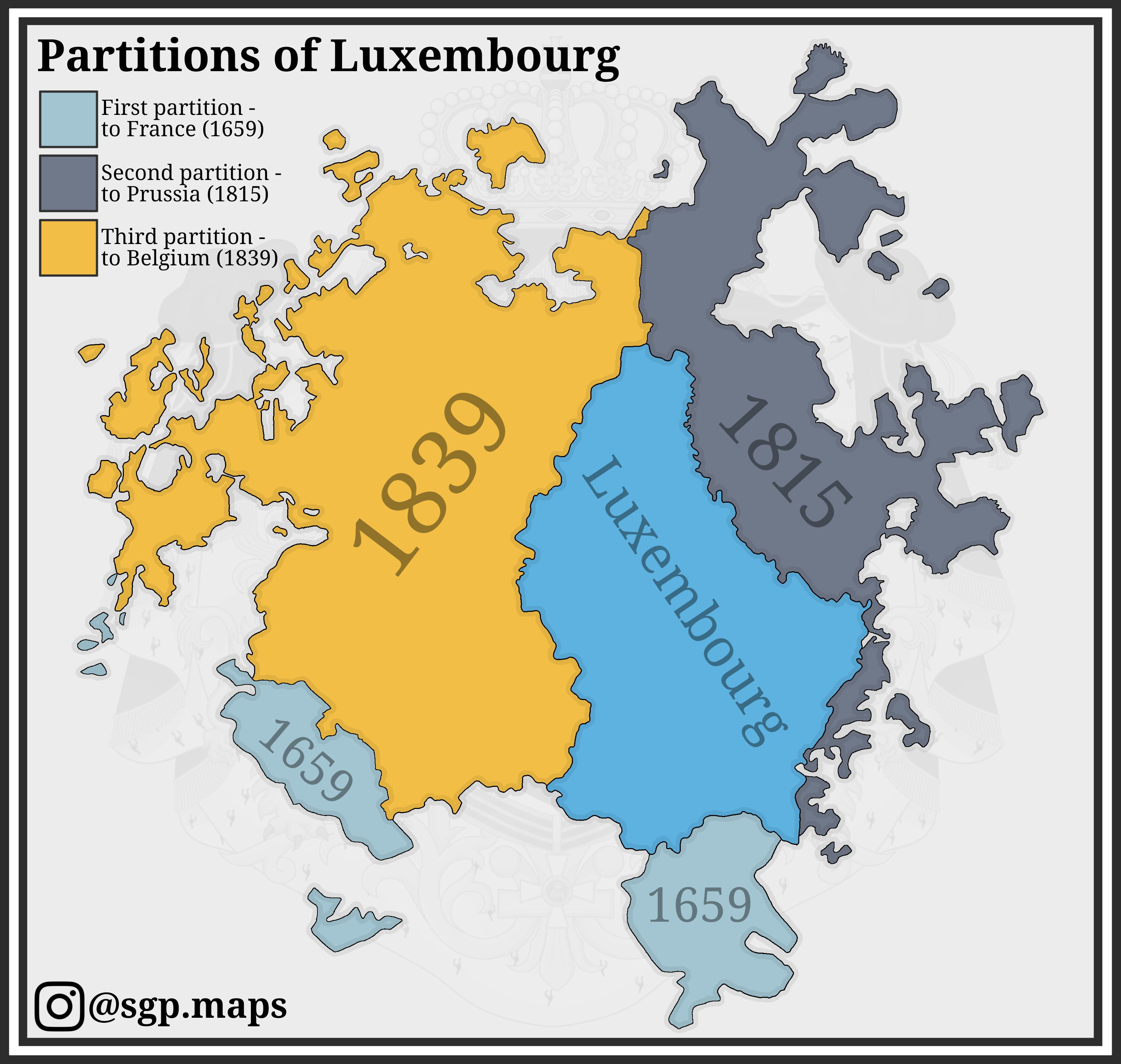Partitions of Luxembourg Map


Alex Cartwright
Senior Cartographer & GIS Specialist
Alex Cartwright is a renowned cartographer and geographic information systems specialist with over 15 years of experience in spatial analysis and data...
Geographic Analysis
What This Map Shows
The "Partitions of Luxembourg" map illustrates the historical and political divisions within the Grand Duchy of Luxembourg. It provides a visual representation of how the country's administrative boundaries have evolved over time, highlighting key events that led to the establishment of various districts and municipalities. This map serves as a valuable tool for understanding not just the geography of Luxembourg, but also its historical context and socio-political transformations.
Deep Dive into Administrative Divisions
Luxembourg, a small landlocked country bordered by Belgium, Germany, and France, has a rich history that is intricately tied to its administrative divisions. The Grand Duchy is divided into several key regions, including the districts of Luxembourg, Diekirch, Grevenmacher, and Esch-sur-Alzette. Each of these districts has its own unique characteristics and demographics, playing a significant role in the nation’s governance and cultural identity.
Interestingly, Luxembourg's administrative structure is rooted in its history as a fortress state, which has seen multiple partitions and annexations since the early Middle Ages. The map reveals the current 12 cantons—these serve as the primary administrative subdivisions, which include notable municipalities such as the capital city of Luxembourg City, known for its historical architecture and vibrant economy.
One of the fascinating aspects of the partitions is how they reflect the country's multi-lingual identity. Luxembourg boasts three official languages: Luxembourgish, French, and German. Each district has its own linguistic and cultural nuances, showcasing the diverse heritage of the nation. For instance, the northern region, around Diekirch, is known for its rural charm, while the southern area, including Esch-sur-Alzette, is more industrialized and urbanized.
Moreover, the map highlights the changes that took place post-World War II, where Luxembourg's borders were solidified, and the nation began to play a more significant role within the European Union. This change in governance and regional identity has led to a more integrated approach in administrative divisions, promoting cooperation among various sectors and municipalities.
Regional Analysis
When analyzing the partitions of Luxembourg, it's essential to look at the variations across the different regions. For example, the capital, Luxembourg City, is not just the political heart of the country; it also serves as its economic powerhouse. This area is densely populated and features a high concentration of services and financial institutions. According to recent statistics, nearly 40% of the country's population resides in the capital region, creating a stark contrast with the much less populated rural areas in the north.
In contrast, the district of Grevenmacher is known for its scenic vineyards along the Moselle River, contributing significantly to Luxembourg’s wine production and tourism. The map allows us to visualize these regional distinctions, illustrating how geography influences economic activities and demographic distribution. Interestingly, Grevenmacher is also a hub for cross-border workers, many of whom commute from neighboring Germany, showing how interconnected these regions are.
Meanwhile, the southern district of Esch-sur-Alzette has undergone a transformation from its industrial past to a more diversified economy. As the second-largest city, it is a prime example of how urban areas can evolve, balancing heritage with modern development. The map’s partitions highlight these developmental phases and the varying economic profiles of each district.
Significance and Impact
Understanding the partitions of Luxembourg is essential for grasping the country's identity and its role on the European stage. These administrative divisions influence political representation, resource allocation, and even cultural preservation. Luxembourg’s unique position within the EU—being one of the founding members—means that its internal divisions also reflect broader European dynamics.
Current trends indicate a focus on sustainable development across all districts, with an emphasis on green spaces and urban planning initiatives aimed at improving the quality of life. Moreover, as the nation faces challenges like housing shortages and demographic shifts, the significance of understanding these partitions becomes even clearer. The map provides a crucial context for policymakers to address regional inequalities and foster balanced growth throughout the country.
In summary, the "Partitions of Luxembourg" map is more than just a geographical visualization; it encapsulates the historical, cultural, and socio-economic fabric of the nation, revealing how its divisions shape and define the Luxembourgish experience.
Visualization Details
- Published
- August 17, 2025
- Views
- 38
Comments
Loading comments...